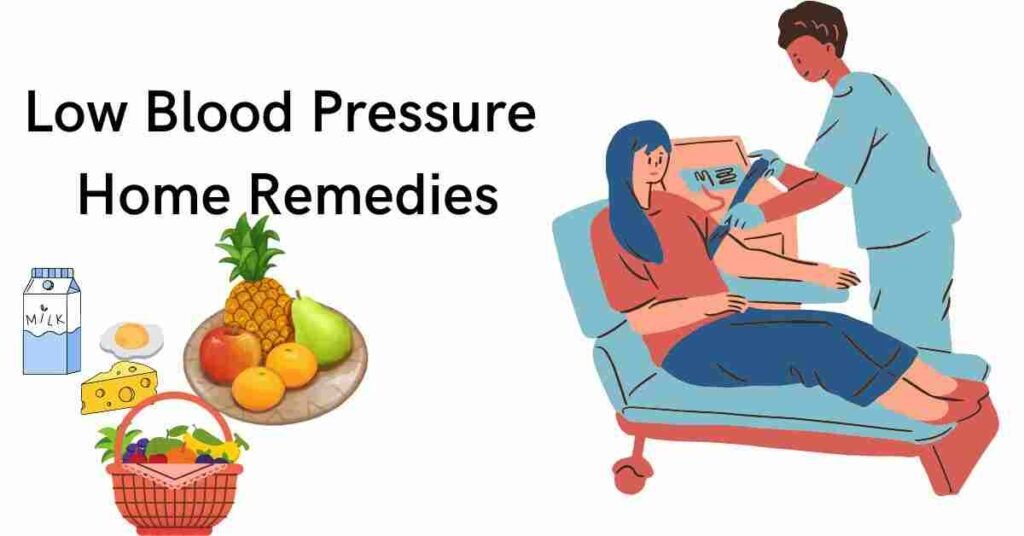Heat illness is simply the illness caused by excessive heat within the body. There are several reasons of excessive heat within the body with different signs and symptoms. In this article we will discuss about various types of heat illness, characteristics, treatment, treatment outcome, etc. Lets have a look.
How does the body temperature increase?
Body temperature can increase from a number of mechanisms such as
1. Exposure to environmental heat (when heat loss is hampered)
2. Physical exercise (increased heat production)
3. Fever from systemic illness (elevated hypothalamus temperature set point with subsequent activation of shivering)
4. Medications (neuroleptic malignant syndrome and malignant hyperthermia)
Important point to note that, persons with fever have noticeable elevations in core body temperature when they are exposed to high ambient temperature, physical exercise, or both.
Heat Illness Effect on Body
There are several effects of heat illness on our body such as
- Environmental temperature and humidity, medications, and exercise heat stress causes the cardiovascular system to provide high blood flow to the skin, where blood pools in warm, compliant vessels such as those found in the extremities. Now when blood flow is diverted to the skin, reduced perfusion of the intestines and other viscera can result in ischemia, endotoxemia, and oxidative stress. Several common mutations in toll-like receptor 4 are associated with endotoxin hyporesponsiveness.
- Not only that, excessively high tissue temperatures (heat shock >41° C [105.8° F]) can produce direct tissue injury. How the tissue will respond to this heat injury depends upon the magnitude and duration of the heat shock influence. Tissue and cells can respond by adaptation (acquired thermal tolerance), injury, or tissue death (apoptotic or necrotic).
- Heat shock, ischemia, and systemic inflammatory responses can result in cellular dysfunction, disseminated intravascular coagulation, and multi-organ dysfunction syndrome.
- Also, reduced cerebral blood flow, combined with abnormal local metabolism and coagulopathy, can lead to dysfunction of the central nervous system.
Heat Illness Diagnosis
Minor heat illness is common and can be recognized by its clinical features. The following signs and symptoms can be seen
1. Heat rash results from the occlusion of sweat gland ducts and can be complicated by secondary staphylococcal infection.
2. Heat syncope (fainting) is common. It is caused by temporary circulatory insufficiency as a result of blood pooling in the peripheral veins, especially the cutaneous and lower extremity veins.
3. Skeletal muscle cramps most commonly occur during and after intense exercise and are probably related to dehydration, loss of sodium or potassium, and nerve fatigue rather than to overheating itself.
Serious heat illness are- heat exhaustion, heat injury, and heatstroke. This is a spectrum. Some persons progress along this spectrum. It means that if heat illness is minor then heat exhaustion occurs, if moderate then heat injury and when heat illness is severe, it leads to heatstroke.
Persons with the following symptoms should have an immediate assessment of their mental status, core (rectal) temperature, and other vital signs. The symptoms are the following
1. Dizziness
2. Un-steady walking (gait)
3. Ataxia (loss of control voluntary movements such as walking)
4. Headache
5. Confusion
6. Weakness
7. Fatigue
8. Nausea, vomiting
9. Diarrhea
The most common causes of hospital admission are fluid and electrolyte disorders, renal failure, urinary tract infection, and heatstroke. If other conditions are not proved, heatstroke should be the initial working diagnosis in anyone who is a heat casualty and has an altered mental status.
Heat Illness Types and Characteristics
Heat exhaustion is a syndrome of hyperthermia (temperature at time of event usually ≤40° C or 104° F) and debilitation that occur during or immediately after exertion in the heat. It is accompanied by no more than minor central nervous system dysfunction where the symptoms are – headache, dizziness, mild confusion. All these symptoms resolve rapidly with proper timely intervention. It is a result of insufficient cardiac output that frequently associated with sweaty hot skin, dehydration, and collapse.
Heat injury is a moderate to severe heat illness. It is characterized by evidence of damage to end organs (e.g., liver, renal, gut) and tissues (e.g., rhabdomyolysis) without sufficient nerve symptoms that can be diagnosed as heatstroke. It is usually associated with body temperatures above 40° C (104° F).
Heatstroke is a severe heat illness. It is characterized by profound mental status changes with high body temperatures, usually but not always higher than 40° C (104° F). But it is important to note that persons with a core temperature higher than 40° C do not universally have a heat injury or heatstroke. The core temperatures this high can be seen transiently after stressful exercise in the heat.
To establish the diagnosis of heatstroke, the entire clinical picture, including mental status and laboratory results, must be considered.
Heatstroke is of two types- Classic heat stroke and Exertional heat stroke.
Classic heatstroke is observed primarily in otherwise sick and compromised person, whereas exertional heatstroke is observed primarily in apparently healthy and physically fit individuals during or after vigorous exercise.
Difference Between Classic Heat Stroke and Exertional Heat Stroke
The basic difference of classic heat stroke and exertional heat stroke are the following
| Patient Characteristics | Classic | Exertional |
|---|---|---|
| Age | Young children or elderly | 15-55 Years |
| Health | Chronic illness | Usually healthy |
| Fever | Unusual | Common |
| Prevailing Weather | Frequent in heat waves | Variable |
| Activity | Sedentary | Strenuous exercise |
| Drug Use | Diuretics, antidepressants, anticholinergics, phenothiazines | Ergogenic stimulants or cocaine |
| Sweating | Often absent | Common |
| Acid-base disturbances | Respiratory alkalosis | Lactic acidosis |
| Acute renal failure | Uncommon | Common (≈15%) |
| Rhabdomyolysis | Uncommon | Common (≈25%) |
| CK (Creatine kinase) | Mildly elevated | Markedly elevated (500-1000 U/L) |
| ALT (Alanine aminotransferase), AST (Aspartate aminotransferase) | Mildly elevated | Markedly elevated |
| Hyperkalemia | Uncommon | Common |
| Hypocalcemia | Uncommon | Common |
| DIC (Disseminated intravascular coagulation) | Mild | Marked |
| Hypoglycemia | Uncommon | Common |
In heatstroke, neuropsychiatric impairments such as- marked confusion, disorientation, combativeness, and seizures, develop early and universally but are readily reversible with early cooling. So with timely proper cooling these symptoms will go away.
Heatstroke can be complicated by liver damage, rhabdomyolysis, disseminated intravascular coagulation, water and electrolyte imbalance, and renal failure.
In fulminant heatstroke, patients have the full spectrum of abnormalities associated with the systemic inflammatory response syndrome.
Treatment of Heat Exhaustion
Treatment of heat exhaustion are the following
1. Rest and shade- This is important to lower the body temperature. The heat loss will be enhanced.
2. Loosen and remove clothing- Loose clothing will promote uninterrupted blood flowing, so heat loss will be increased through body surface.
3. Supine position and elevate legs- This position will increase blood circulation in brain and decrease the chance of heat syncope or fainting.
4. Actively cool skin- Cooling the skin will decrease the body temperature, as a result the heat exhaustion symptoms will go away, eventually the person will feel better.
5. Fluids by mouth- Fluid intake by mouth corrects the dehydration caused by heat exhaustion. Also it gives a watery feeling of mouth and throat which became dry due to heat exhaustion. But it is important to note that, if the patient is unconscious or seemed to be unconscious, fluid should not be given by mouth because it can cause airway blockage and may turn into serious outcome. In unconscious person, fluid should be given by intravenous (i.v) infusion.
6. Monitor core temperature- Monitoring the core temperature is highly important. It gives the indication that how well the patient is responding to the treatment. The temperature should go down with the above mentioned treatments, if not other measures should be taken promptly to decrease the body temperature.
7. Monitor mental status- Mental status of a patient gives indication about the severity of heat illness. If mental status is not altered, the patient is alert, speaks normally, and conscious, it usually indicates the heat illness is minor. So, time to time monitoring of mental status is important.
Heat Injury and Heat Stroke Treatment
Treatment of heat injury and heat stroke are same as the treatment of hyperthermia.
Heat Illness Treatment Outcome
A single time occurrence of heat exhaustion does not causes a predisposition to heat illness. Mostly patients recover within several hours after cooling and rehydration. But it is important for timely cooling and rehydration. More early patient gets the treatment, more early the patient gets cured.
For the cases of heatstroke, the scenario is different. Patients who come to a hospital with heatstroke, however, mortality rates can range from 21 to 63%. Heat stroke is serious heat illness, so prompt treatment is essential.
Mortality in both classic and exertional heatstroke depends directly with the magnitude and duration of temperature elevation, the delay in time to initiation of cooling, and the number of organ systems affected. More elevation of body temperature and more delay in seeking treatment usually results in multiple organ failure. That is why it is always vital to seek the treatment immediately without a delay to increase the chances of survival.
Although most patients who survive a heatstroke will have a full recovery, some can have permanent organ damage. Neurologic injury with cerebellar dysfunction is the most common sign. It is seen that patients who have recovered from heatstroke with organ damage have a higher long term mortality from cardiovascular, liver, and digestive diseases.
Patients who have suffered heat injury or heatstroke should not be re exposed to heat until recovery is complete, which can be many weeks or months, and about 10% of heatstroke patients remain intolerant of heat. It is always better to avoid heat as much as possible to get the long term benefits.





